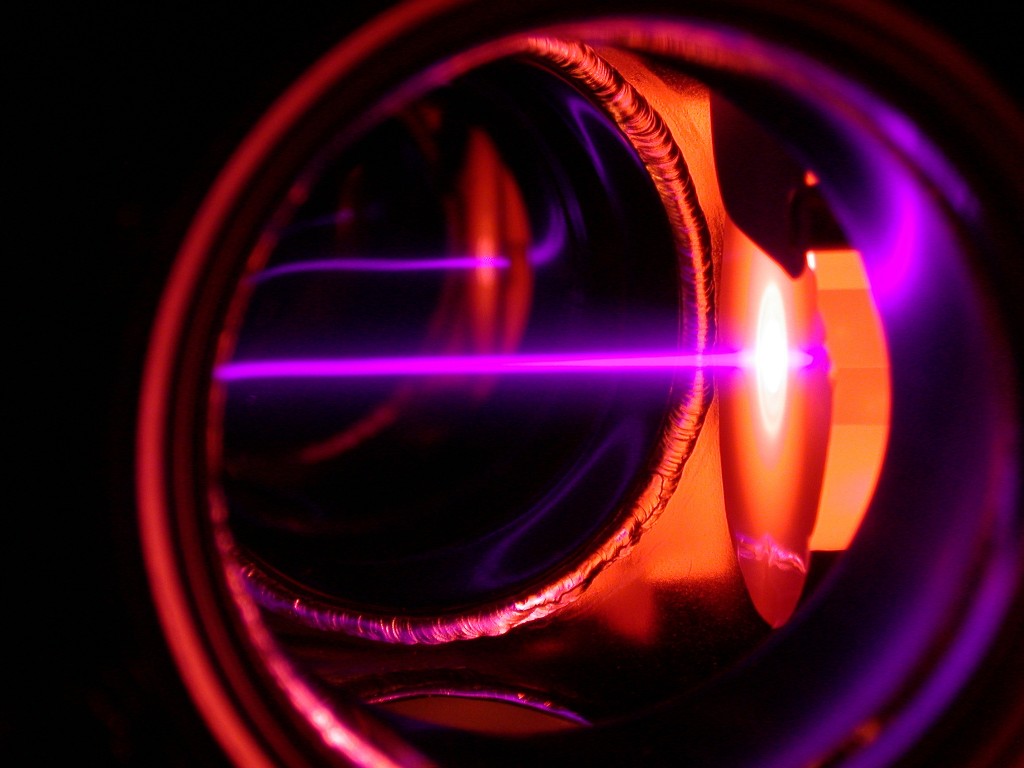
Laser cooling refers to a variety of techniques. The most common method is Doppler laser cooling. But cooling atoms by laser?
Although the math and physics are challenging, we can understand the idea and basic mechanism more easily when we introduce three basic concepts first: quantum absorption of energy, the Doppler effect, and how atomic motion correlates with temperature.
The Absorption of Energy “Quanta”
It is at the very heart of the quantum theory that an electron bound in an atom cannot absorb just any amount of energy it encounters.
In the free state, it can, but as soon as the electron is restrained as part of a new structure in an orbital, only certain discrete amounts of energy can be absorbed at any time. This specific amount or quantity of energy is a quantum. The quantum an electron absorbs is a light particle – a photon.
Different photons of different frequencies have different energies, described by the simple equation,
E = hʋ
(Where h is an unchanging number called the Planck constant.) The higher the frequency (ʋ) is, the higher the energy (E) is. The lower the frequency of light, the lower is its energy. As an example, red light has a lower frequency than blue light. So red light is lower in energy than blue light.
Simple Example of the Doppler Effect
If you drive toward an oncoming train as it cries out, you will notice the sound changes as it passes. It will go from a higher note to a lower note. This is because the sound is moving with a velocity v1, whereas you are traveling with a v2. As you head toward the train, you and the sound are traveling toward each other with a total velocity,
v(total) = v1+ v2.
Now sound travels in all directions, so when the train passes by you, the sound is still traveling toward you with velocity v1. You are also still traveling with velocity v2. However, you are traveling away from the sound. The total velocity in this instance is subtractive,
v(total) = v1 – v2.
Increasing speed increases the frequency. Decreasing the speed lowers it. This change in frequency is called the Doppler effect.
Atomic Motion Means Temperature
Atoms are forever in motion. We know from the discussion under subheading one that energy absorption can only occur in specific quanta. However, the atoms as complete units increase in kinetic energy. That is, they move more rapidly, and by so doing they increase in temperature. Conversely, slowly-moving atoms are cool atoms.
Doppler Laser Cooling
A limited number of atoms are in a chamber through which two laser light beams pass in opposite directions. The frequency of the light is ever so slightly below that necessary for the electrons to absorb the photons. Those atoms that happen to be moving toward one laser beam are traveling away from the other beam.
Since the atoms are moving toward the photons of the one beam, the velocities add, allowing photon absorption. Of course, photons from the other beam may not be added, as the frequency appears lowered. Photons of light possess momentum, which slows approaching atoms down.
The energy gained by absorbing the photon is lost by re-emission. Since this re-emission is not direction-specific, the photon is not likely to regain its former velocity (it would only do so if the photon was coincidentally emitted on the exact opposite side of the electron). Instead, it gains some sideways thrust.
Since the atoms are, over time, slowed, they are cooler.
Cooling Atoms – To What Point and Why?
Atom cooling to such a low temperature is essential for the observation of complex quantum effects that are not detectable unless the motion (hence, temperature) is at a near standstill. The advanced student is directed to the reference of Wieman, et. al, cited in the References.
How much can Doppler laser technique cool down atoms? Using the basic technique, science can cool atoms to within a fraction of a degree of absolute zero. In fact, there are modifications of this technique that can cool atoms down to about 30 millionths of one degree.
Note: You might also enjoy Do Lone Atoms or Molecules Assume States of Matter?
References:
- Phillips, William D. Nobel Lecture: Laser Cooling and Trapping of Neutral Atoms. (1997). National Institute of Standards and Technology: Physics Laboratory – Atomic Physics Division
- Bardi, Jason Socrates. Laser Cooling and Trapping of Neutral Atoms. (2008). Phys. Rev. Focus 21, 11
- Wieman, Carl E. Atom Cooling, Trapping, and Quantum Manipulation. (1999). Rev. Mod. Phys., Vol. 71
